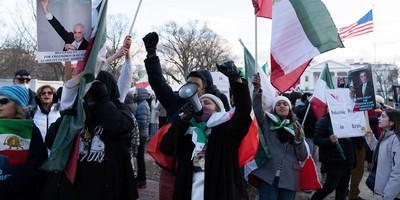On October 23, 1956, Hungarians began Eastern Europe's only Cold War armed rebellion against Communism. Unfortunately, their attempt to free themselves would falter and fail, defeated by Russian tanks.
But we took the risk; 21st century Hungarians remind our forgetful world. We put lives on the line in a fight for basic freedoms -- free speech, freedom from fear of a totalitarian government and its savage secret police.
On October 22, 1956, students in Budapest announced they would rally the next day to protest government injustices. The next day, 100,000 people showed up to cheer as students read a document with 16 demands addressing political and economic issues.
"The 16 Point Program" was unrealistic, but its goals were popular. The students called for the withdrawal of Soviet troops. The Kremlin had violated its own peace treaty, the one it had imposed after WWII.
The students demanded a just government. Matyas Rakosi's Communist regime was a Russian puppet and a criminal enterprise. After securing absolute power in 1950, Rakosi and his State Protection Authority had imprisoned or murdered over 200,000 Hungarians.
In July 1956, the "de-Stalinizing" Kremlin had removed Rakosi. The Russians knew Rakosi was despised. Imre Nagy replaced him. Rakosi's AVH, however, wasn't replaced.
The plucky Nagy began investigating Rakosi's crimes, with the goal of righting past wrongs. Righting wrongs, however, would implicate the Soviets, so the Kremlin fired Nagy. A Rakosi ally, Andras Hegedus, became prime minister.
One of the 16 points explicitly demanded that the courageous Nagy lead a free Hungarian government.
The students marched on the national radio station. Along the way several hundred protestors decided to topple a statue of the hated Soviet dictator, Josef Stalin. At the radio station protestors demanded they be allowed to read the 16 Points on the air. Scuffles broke out. An AVH security force at the station fired on the unarmed students.
Recommended
The night of the 23rd was a busy one in Budapest. A group of armed freedom fighters seized the radio station. Imre Nagy became the revolutionary prime minister. Sometime after midnight, a Russian tank unit rolled into the city.
On October 24, clashes between Russians and Hungarians were minimal, in part because Nagy said to avoid confrontations. On the 25th, however, Russian soldiers shot and killed 800 demonstrators in Budapest.
Nagy declared a free, multi-party Hungarian state. Fighting between Hungarian freedom fighters and Russian forces erupted throughout Hungary.
In Budapest an ad hoc Hungarian National Guard led by General Bela Kiraly attacked pro-Communist Hungarian forces and battled the Russians. A WWII hero, the communists had sentenced Kiraly to life in prison. His release was recent. At one time, both Adolf Hitler and Josef Stalin had ordered Kiraly's execution. The dictators' enmity spoke volumes about Kiraly's political liberalism and his Hungarian nationalist credentials.
Kiraly's ad hoc army dealt the Russians an initial defeat. Russian counter-attacks produced a stalemate -- an astonishing outcome given the presence of Russian armor.
On October 28, Nagy announced a ceasefire. Fighting lapsed from October 28 to November 4. The Kremlin wasn't sure what to do. Russian WWII hero, General Georgy Zhukov, thought Russian forces should withdraw. But on October 30, armed protestors attacked a Communist Party office in Budapest and killed 20 AVH secret policemen. On November 1, Moscow began reinforcing its units in Hungary. On November 4, the Kremlin launched an all-out attack on the Hungarian revolution. By November 9, the revolution was shattered and over.
Nagy was arrested November 22 and later executed. 2,500 Hungarians died in the revolt, and an estimated 20,000 were wounded. Officially, Russia lost 699 soldiers killed in combat. Over 200,000 Hungarians refugees fled the country. That figure includes Kiraly and some 3,000 fighters who evaded pursuing Russian tanks and escaped into neutral Austria.
Why didn't the U.S. and NATO intervene? In President Dwight Eisenhower's opinion, military intervention was impossible. NATO would have to enter Austria or Yugoslavia to reach Hungary.
Given the circumstances, it was the best decision Ike could make. Still, his decision embitters some Hungarians. Ike praised the Hungarians' courage. 60 years later it deserves celebration.

























Join the conversation as a VIP Member